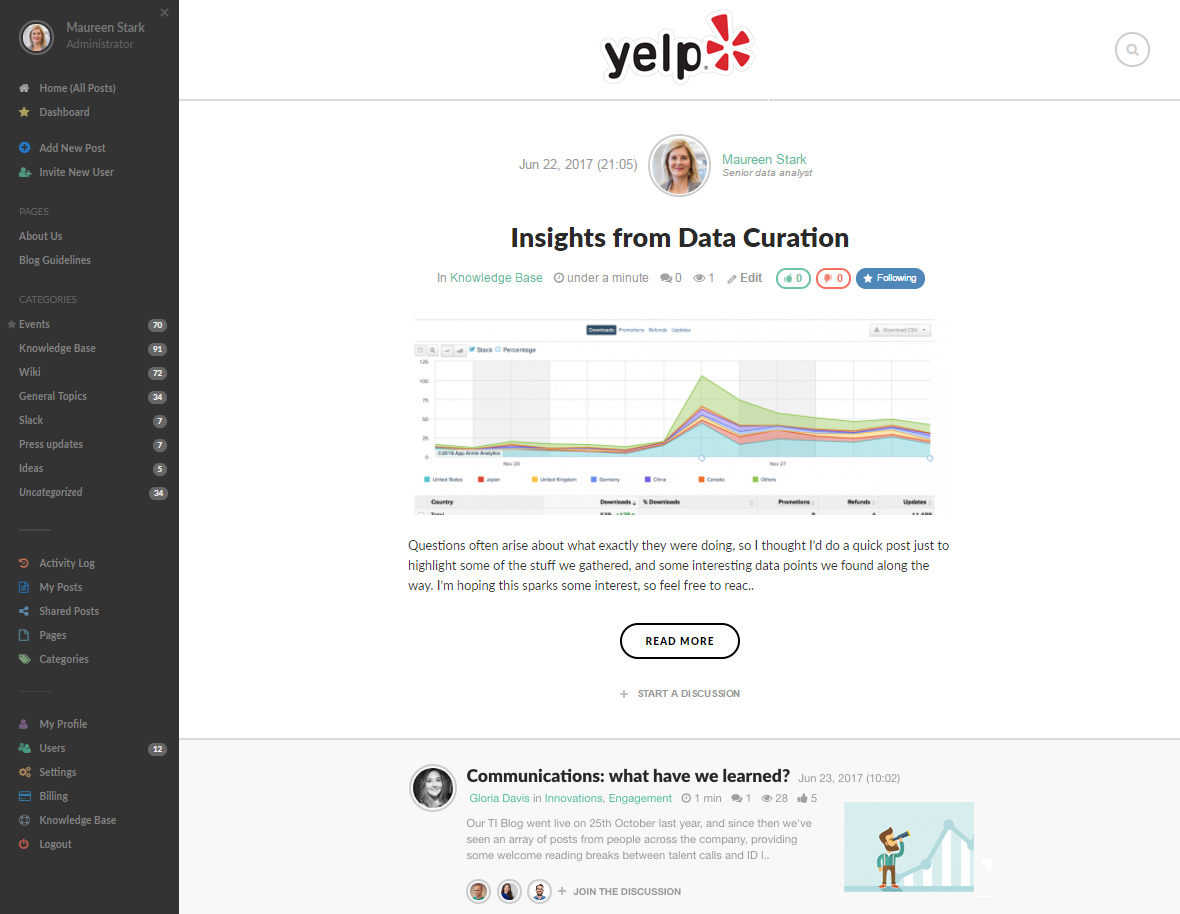
Employee engagement is not a new buzzword. Its merits and benefits have been thoroughly discussed and analyzed for decades to a point where it feels like the subject is fully exhausted.
Still, as with most things in life, theoretical understanding doesn’t necessarily translate into practical implementation. In 2020, there is still a stark contrast across the professional landscape in terms of employee engagement strategies (or lack thereof) and their success.
Recent research shows that there are not only great differences between individual company efforts to attain a satisfactory level of employee engagement but also a disconnect in the perception of employee engagement within organizations.
One of the more telling research results shows that while 50% of surveyed HR personnel claims to employ various employee engagement solutions on a company-wide level, only 15% of non-HR employees share this viewpoint.

Of course, it is to be expected that HR professionals will have a somewhat different perspective than “regular” employees, but the difference still speaks volumes. Despite a large body of theoretical knowledge, practical experience, and technological tools at our disposal, it seems that we are still far from reaching a consensus on what constitutes an efficient employee engagement strategy.
With that in mind, over the following lines, we will revisit the key points of employee engagement and provide an overview of both the latest and tried and tested tools that can help organizations nurture engaged and motivated employees.
The Fundamentals
A number of relatively recent studies have found a direct correlation between engaged employees and their organization’s productivity. Put simply, an engaged employee is a productive employee.
But what constitutes an engaged employee? Employee engagement is different from employee satisfaction in that it not only suggests a satisfied worker, but also one that develops a strong emotional bond to its organization and a heightened sense of involvement and commitment to its success. An engaged employee feels recognized and appreciated by the organization, and thus more inclined to align its professional goals with it.
Still, understanding what makes an engaged employee is only a small first step towards actually achieving it. Before a company can even begin to consider the level of engagement of its employees it must first lay down the groundwork.

The Prerequisites
The key thing to understand is that employee engagement does not happen in a vacuum. It is the end result of a myriad of different factors that encompass nearly all aspects of an organization’s operations, from financial satisfaction to the practical manifestations of organizational culture. In short, there's no cutting corners.
In order to nurture engaged employees, companies must show an active and continued investment in their wellbeing, be it financial, physical or mental. In order to have caring employees, they must have a caring company culture. No amount of superficial efforts designed to boost employee engagement can cover up the lack of substance behind it. A company must place a high value on its workforce in a substantial, visible way.
The Tools
As we have already established, attaining a high level of employee engagement requires a comprehensive effort. The tools which we will discuss are not magical wands guaranteed to deliver results. They are merely extensions of existing policies and activities that can help streamline and focus these efforts for a greater impact.
Communication
An essential part of the workplace experience, communication is an area that can make or break teams. Connections we create with our colleagues play a major role in how we feel about our workplace. It is critical that companies provide communication channels between employees that will not only allow them to discuss business matters but also connect on a more personal level. Tools like Slack, Skype, Google Hangouts, or other communication software should be a necessary part of every company’s arsenal.
Collaboration
Working together towards a shared goal creates a strong emotional bond between individuals. Quality collaboration goes a long way in breeding employee engagement. The list of collaborative software tools grows larger by the day, but your choice will be greatly determined by the nature and the needs of our business. Trello, Basecamp, Confluence, or Asana are only some of the popular tools that allow team members to collaborate, discuss, and track their tasks and projects.
Feedback
When done right, feedback works twofold - it not only gives the employees a relevant assessment of their contributions but also enables them to have their say about the company and its operations, allowing their voices to be heard. Tools like 15five and Officevibe encourage and simplify feedback on a regular basis, but you should do some research to find a tool that best suits your organization’s needs.
Recognition

Being recognized and valued for their work is essential to employees becoming more engaged with their employer. Lack of recognition is often cited as the No.1 reason for leaving a job. Giving credit where credit is due is a prerequisite to building an engaged workforce. Tools such as Kudos or Tap My Back can provide a quick and efficient way to recognize and reward deserving employees, but it all starts with an organization’s genuine desire to provide validation and recognition to those employees that best represent its core values.
All-in-one
While all the above-mentioned tools (and many unmentioned as well) have a number of qualities that can help drive employee engagement, they all suffer from the same flow - they only address one aspect of employee engagement.
In order to maximize their potential, you would have to combine an indefinite amount of different tools and invest an indefinite amount of effort to utilize and keep track of it all. Many organizations would then prefer a single, comprehensive solution.
That solution comes in the form of an internal company blog. A strong all-around internal blogging platform such as BlogIn allows organizations to streamline their internal communications and provide a platform for a variety of different functions, from collaboration and communication to feedback, and beyond.
The great thing about BlogIn is its flexibility and adaptability that enables organizations to tailor the platform in a way that best suits their needs.

Ultimately, the level of employee engagement will be determined by the body of work that makes up the culture of your organization. High employee engagement can only be achieved through a concentrated effort on all fronts and a genuine interest in the employees’ career development.
It may seem like a limitless amount of work, but start off with good intentions and your actions will follow suit.
